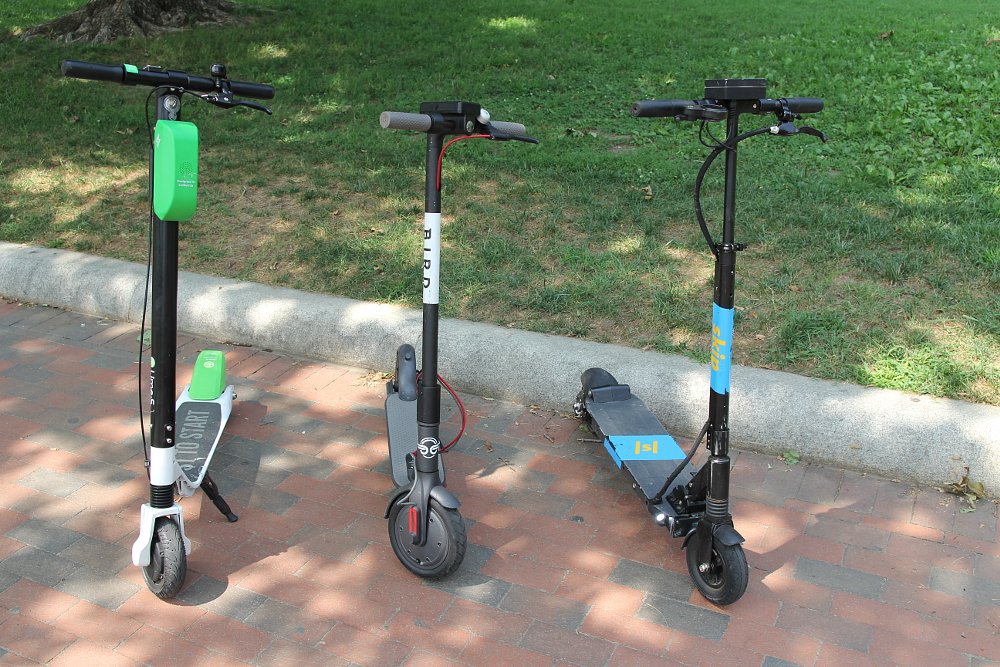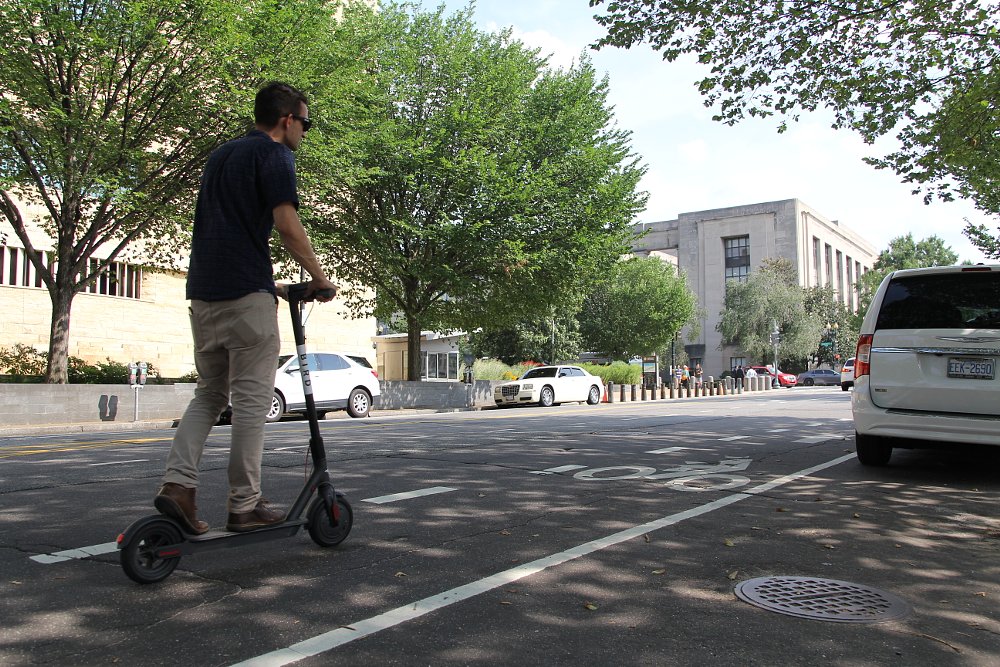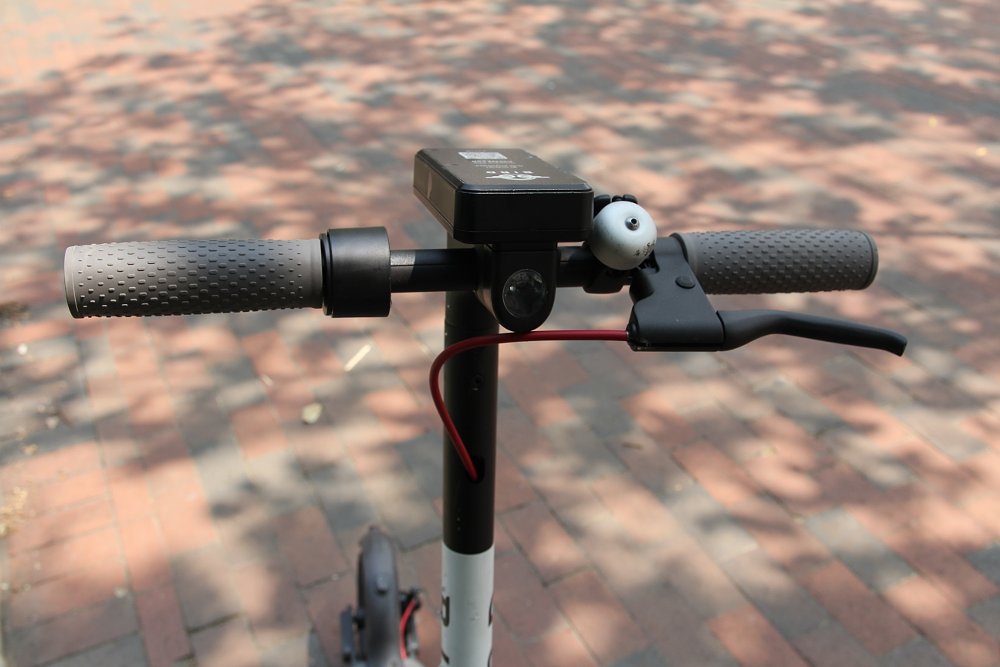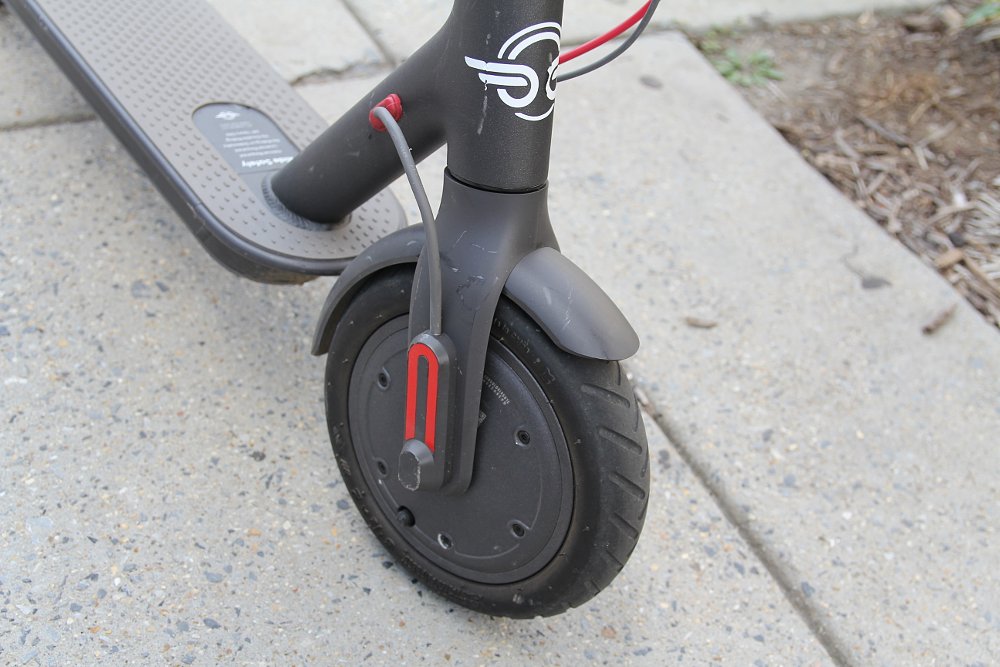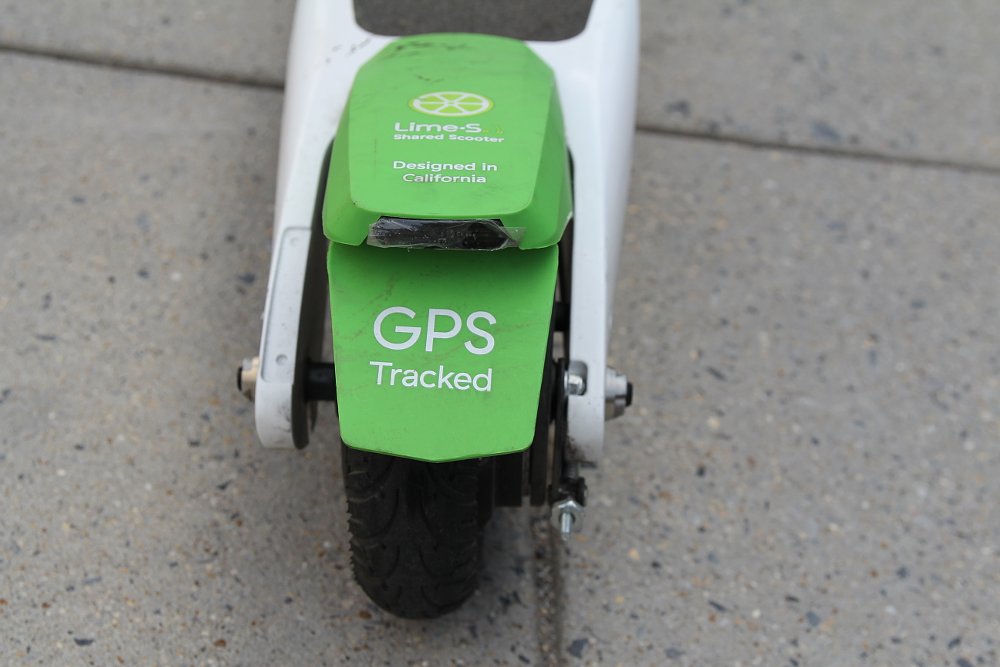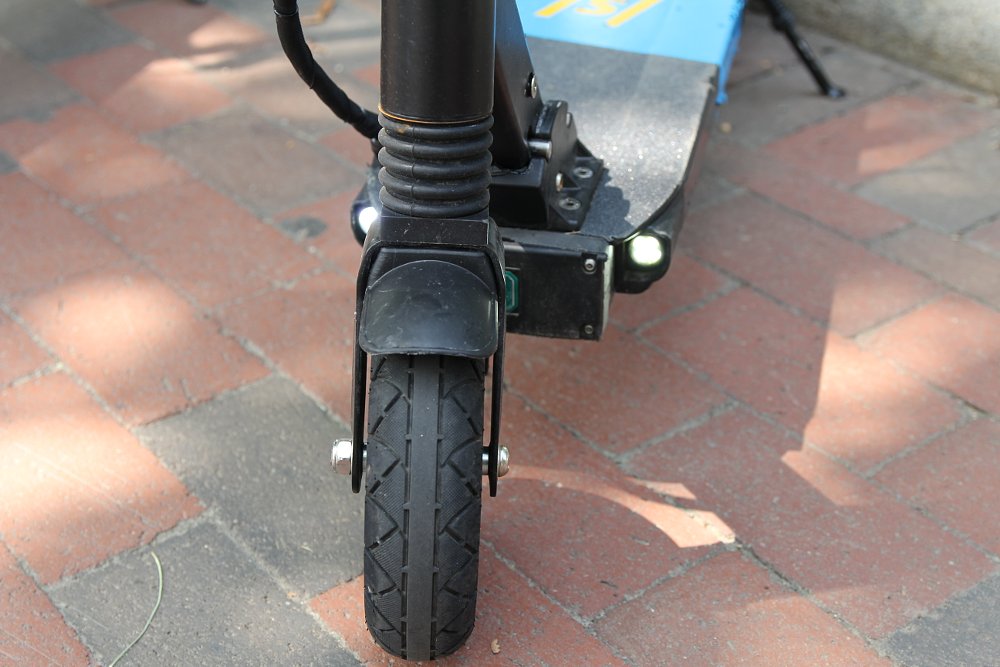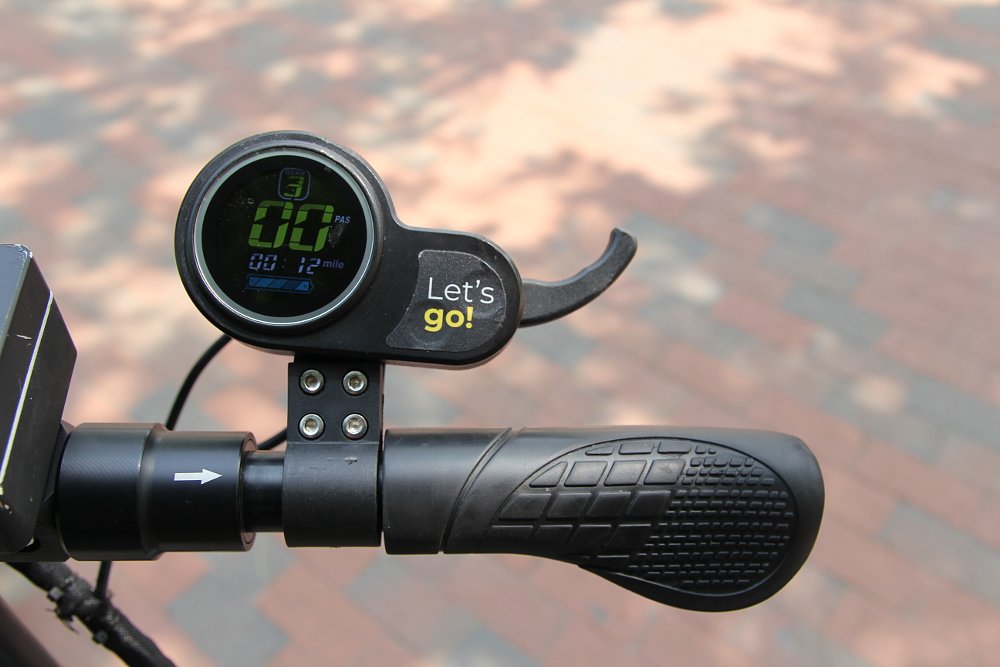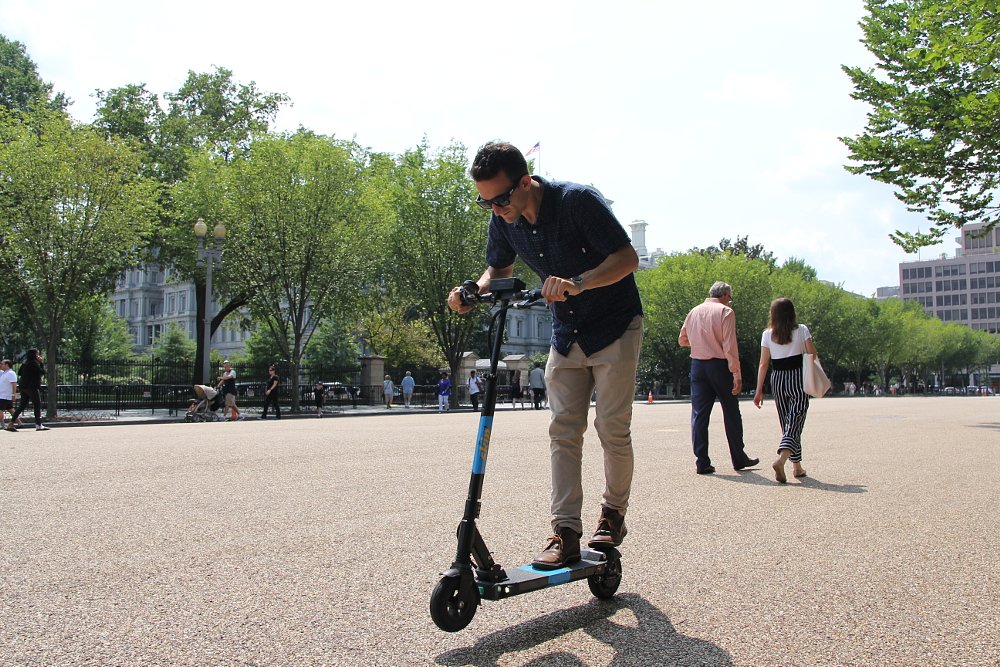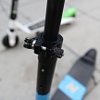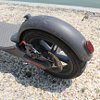Not a motorcycle, not a motorcycle, not a motorcycle. I know, trust me. Dockless electric scooters aren’t motorcycles. But they are self-powered two-wheelers, and the startups delivering them onto city streets across America claim they’ll revolutionize personal transportation.
If they had their way, electric scooters might even replace motorcycles for short urban trips in a more fully realized sharing economy. Are these scooters a gateway to riding, a viable competitor to urban motorcycling, or a fad that would never catch on like its creators claimed it would? Only one way to find out. Washington, D.C. is currently running an electric scooter pilot program, so I went to check out these disruptive people-movers for myself.
What the heck are dockless electric scooters, anyway?
If you’re new to the concept, dockless electric scooters look like the kick scooter you might have had as a kid, but electrified and with better brakes. A GPS tracker and other electronics keep the unit connected to a city-wide network. From a scooter app, you can see scoots available in your area. Find one, scan its code with your phone, and the unlocked scooter starts billing by the minute. D.C.’s rates are about $1 to unlock, and $0.15 per minute after that. When the ride’s over, end the session in the app. Park the scooter somewhere out of the way, and it’s visible in the app once again for the next rider. Scooter companies pay a recharging bounty on each scooter once the battery level gets low, so locals collect depleted scoots, charge them, and put them back out for use.
I started my car-free day with a ride into the city on DC’s metro. Before hitting the streets, I met up with Brian McEntee for some perspective on the state of personal mobility in D.C. An avid cyclist, Brian writes the Gear Prudence column for the Washington City Paper, which covered the electric scooter invasion among other transportation topics. Half a year into D.C.’s pilot program, Brian’s sure of one thing: Personalized, small-scale mobility isn’t going away.
The arrival of the scooters was a big change for D.C.’s streets, especially as scooter riders struggled to find their place between the roads, sidewalks, and bike lanes. Much of that struggle comes from the newcomers' limitations. Electric scooters aren’t fast; Brian called them “walk enhancers.” While other cities lost their minds — sometimes violently — over the scooter invasion, D.C. remained largely civil.
“D.C.’s successful bike-share program came long before the scooters, so I think people were a little more open to the idea. They get annoyed by scooters on the sidewalk sometimes, but no one is setting them on fire.”
In his article, Brian suggests three reasons that people might stop using the scooters: the scooter companies run out of money, public opinion turns against them, or people just stop using scooters, preferring whatever they used before. Of the three, Brian sees lost interest as the novelty fades as the scooters’ biggest threat. (A new concern, tariffs on imported electric scooters, has also emerged in recent weeks.) He’s also not sure that the scooters are creating new trips. Where someone might use a scooter instead of a car or bicycle to get to an event, the scooters need to create new trips to be truly revolutionary.
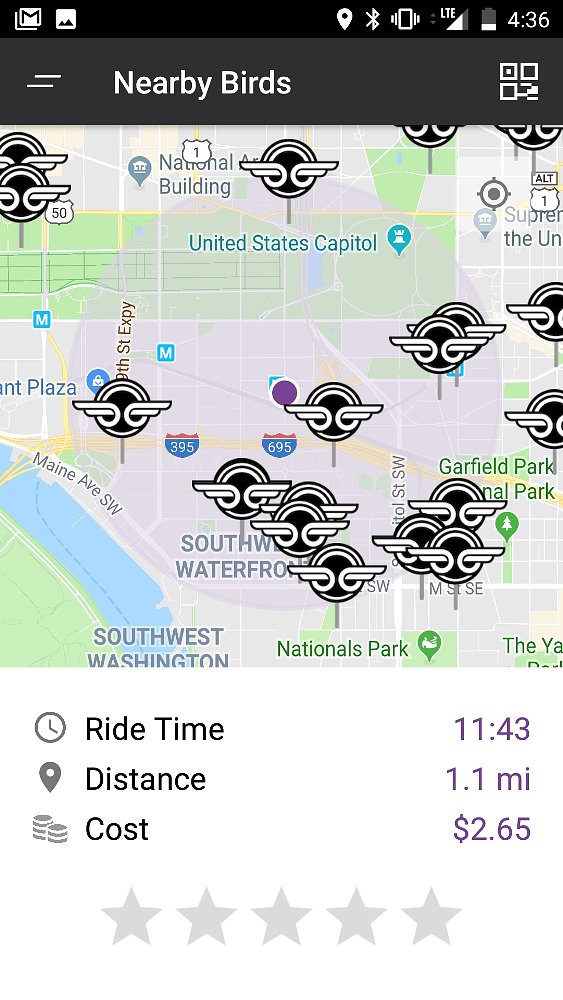
The scooters have also failed to move existing barriers in mobility. Open a map, and the available scooters are clustered in the upscale and tourism-heavy sections of the city. Electric scooters are out of reach, geographically and financially, of many D.C. citizens, which means the electric scooters haven’t changed existing socioeconomic barriers. For many, that severely limits their value to civic mobility.
There’s a silver lining, though. “If anything, the scooters have exposed the need for better public transportation,” Brian explained. “The answer to that should be public policy that supports 21st century transportation needs, not constant patching of 20th century infrastructure. Once people break free of the idea that you have to use a car, anything is a possibility.” I couldn’t agree more.
“We used to have ‘hierarchies’ of personal transportation," Brian continued. "You could walk, or take a bike, or buy a motorcycle, or at the top, own a car. Now, intermediate products become the key. Even these scooters. What do you mean by ‘scooter’ in 2018? Do you sit? Stand? Is it gas? Electric? Fifty years ago, ‘scooter’ just meant a Vespa or maybe a Honda. Now, the landscape has changed, along with the language, and there are unique options for everyone. Today, it’s less about taxonomically classifying transportation, and just understanding that there’s an option for any need.”
Getting all those options to flow together on the same streets poses a challenge, however. “When you’re out there on a scooter, you’ll feel it," Brian warned. "You don’t really belong anywhere. But once you get used to it, you’ll figure out what makes sense and what doesn’t.”
Coffees empty, it was time to get riding.
Test-riding DC's three scooter options
I thought it’d be more of a challenge to try all three scooter services in D.C., but I had no problem locating and unlocking an example of each option. I started out on a Bird, but lost some time when the app needed my driver’s license. While D.C. requires riders to be at least 16 years old, Bird also requires a scan of your card, which didn’t work. Manually entering my information did the trick. I’d expected the scooters to all be the same thing with different paint and decals, but that definitely wasn’t the case.
You’d think you could just punch the throttle and start going, but the scooters need to be rolling before the motor can kick in. This is probably to prevent accidental acceleration, and also to save the battery from the work of launching from a standstill over and over. I cut across downtown, and like Brian said, I quickly realized that I didn’t truly belong anywhere. But soon after, I experienced the beautiful thing about not fitting in: You can go anywhere you damn well please, because you don’t belong anywhere anyway. Need to ride in a lane with slow city traffic? Sure. Lanesplit and filter to the front? Easy. Hop up on the sidewalk? People don’t really care, as long as you give them space. But best of all were the bike lanes. Abandoned in midday, D.C.’s many bike lanes were like non-stop superhighways for the scooter. With the throttle wide open, I was just cracking 15 mph towards the Washington Monument. Beats sprinting everywhere.
My favorite of the D.C. offerings, Bird, had the biggest wheels, which made a real difference on uneven surfaces and at speed. The Bird lacked suspension, but the ride really wasn't that bad. Slowest off the line but decent once rolling, Birds were easily the best stoppers of the lot with their rear discs. (Scooter wheels plus disc brakes make great skids.) Birds were also easy to find, and they had the best app once you got through the annoying license verification. My path through the city took me past the White House towards Lafayette Square, where I swapped apps and picked up a fresh Lime.
The Lime S was fastest to accelerate, but its smaller eight-inch wheels were squirrely and harsh on bumps, despite the front monoshock's best efforts. Its scooters and app (second-best, in my opinion) looked the most modern of the three, like some Apple-Uber collab. The white paint showed its age, however, so the understated dark colors of Bird’s fleet looked much more practical. Lime made it easy to share codes with friends for $3 credits, which is a good for a few miles if you keep it moving. I’d only covered a short distance (Lime claims a maximum range of 20-plus miles), but I could hear pedestrians talking about the scooter as I waited at lights or passed them on a path. “We’ve got to try those! They look like fun!" "Are they allowed on the road? How much are they?” Meanwhile, stone-faced D.C. suits zoomed past, earbuds in, dark-sunglassed, and head-to-toe business... all seriousness undermined by their cheerful scooters.
I started looking for another scoot to try and headed north, seeking lunch.
Then I found a Skip. Skip’s scooters were less polished than Bird or Lime’s, but they had more personality, thanks to a combination of the best top speed, the worst brakes, and useless suspension. The funky trigger-throttle only made things weirder. In traffic, a fully charged Skip put the others to shame in a straight line, but the app didn’t display battery levels of scooters around you, so you had to find a good one in person. The Skip fleet seemed to be the smallest, but the rarity almost made them special. For what it’s worth, they also had the best lights and instrumentation.
Stopping at Founding Farmers for some food, I spotted a small Chinese gas scooter chained up across the street, which got me thinking. For these short hops around the city, I actually preferred the dockless scooters to renting a 50 cc Taotao or something while exploring flat metro areas. Later, some kids started playing on my Skip scooter, and I realized, that’s not my Skip. That’s just the one I got here on. Now, if a delivery truck backed into the Taotao? That would have been my problem. Later, someone walked past the scooter I’d parked, walked back, took another look, and started setting up the app. He went from pedestrian to new rider in three minutes, tops. That'd be a real feat for a motorcycle.
I can’t speak for D.C. residents, but as a visitor, the scooters were way better than I thought they’d be. If you go non-stop, scooting works out to around $0.60/mile at $0.15/minute plus $1 to unlock. Minimum taxi fare in Washington, DC is $3.50 for the first eighth of a mile and $2.16/mile after that, so for short rides, scoots are tough to beat. You can also opt for a ride-sharing service, but they’re not exactly cheap for last-mile transportation, either. If you’d like to skip all the apps and just get a scooter of your own, Chinese tech giant Xiaomi makes a dead ringer for the Bird (almost certainly their fleet supplier), priced around $500. Just don’t park where someone will try to rent it.
Does this have any effect on motorcycling?
Is it possible that electric scooters will help motorcycling? Maybe. One rider I spoke with said, "I would 100 percent try a Vespa scooter next, perhaps if traveling, but would still remain unlikely to go up to a full-blown motorcycle. The shifting is terrifying to me.”
Another scooter rider I interviewed was also a motorcyclist. “It’s definitely not a motorcycle, but for quick trips or visits, I’m glad to have the option. If I take the metro, I can’t ride [the motorcycle] anyway. No way I’m getting rid of the bike and switching to just scooters, but I’d use both for different kinds of trips. And if I could only pick one, I’d definitely stick with the motorcycle.”
A study published in July found that 70 percent of people in 10 U.S. metro areas had positive feelings towards dockless scooters. Among the reasons they liked them? “They expand transportation options, enable a car-free lifestyle, [and] are a convenient replacement for short trips in a personal vehicle or ride-hailing service.”
Hey, that sounds like motorcycles, too. If scooters get people thinking outside the cage for personal transportation, that could lead them to motorcycling, but don’t count on it. I also doubt that Birds, Limes, and Skips will steal riders away from motorcycling.
My advice? Just take dockless scooters for what they are: slow, simple, low-buck fun on two wheels.





